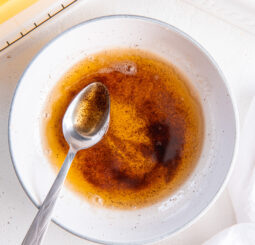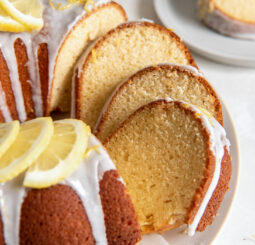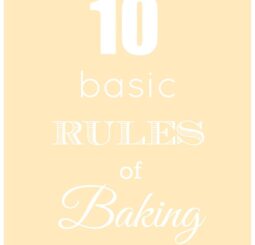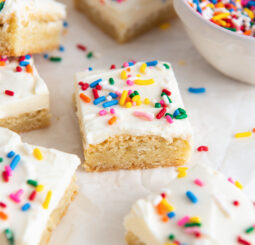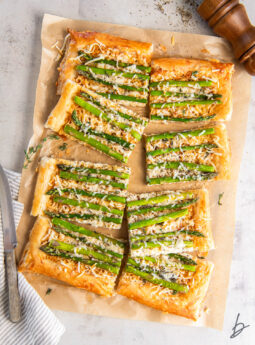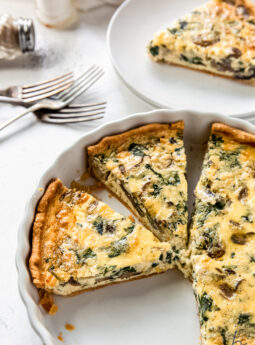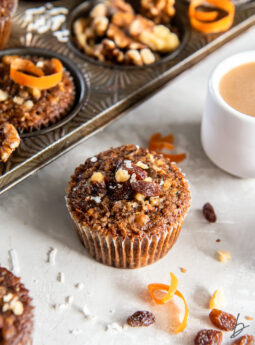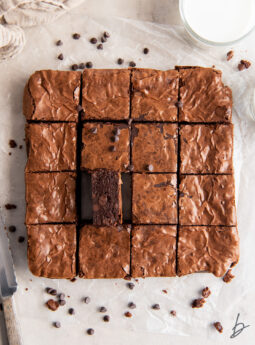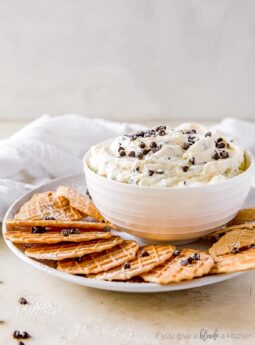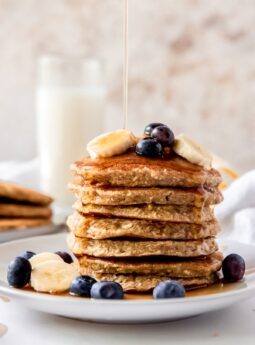How to Measure Flour Correctly
Baking is a science and accurate measurements are everything. Flour is the base for the majority of baking recipes and accurate measurements can guarantee a perfect chocolate cake or the best flaky biscuits. Learn how to measure flour with or without a kitchen scale and set yourself up for baking success!
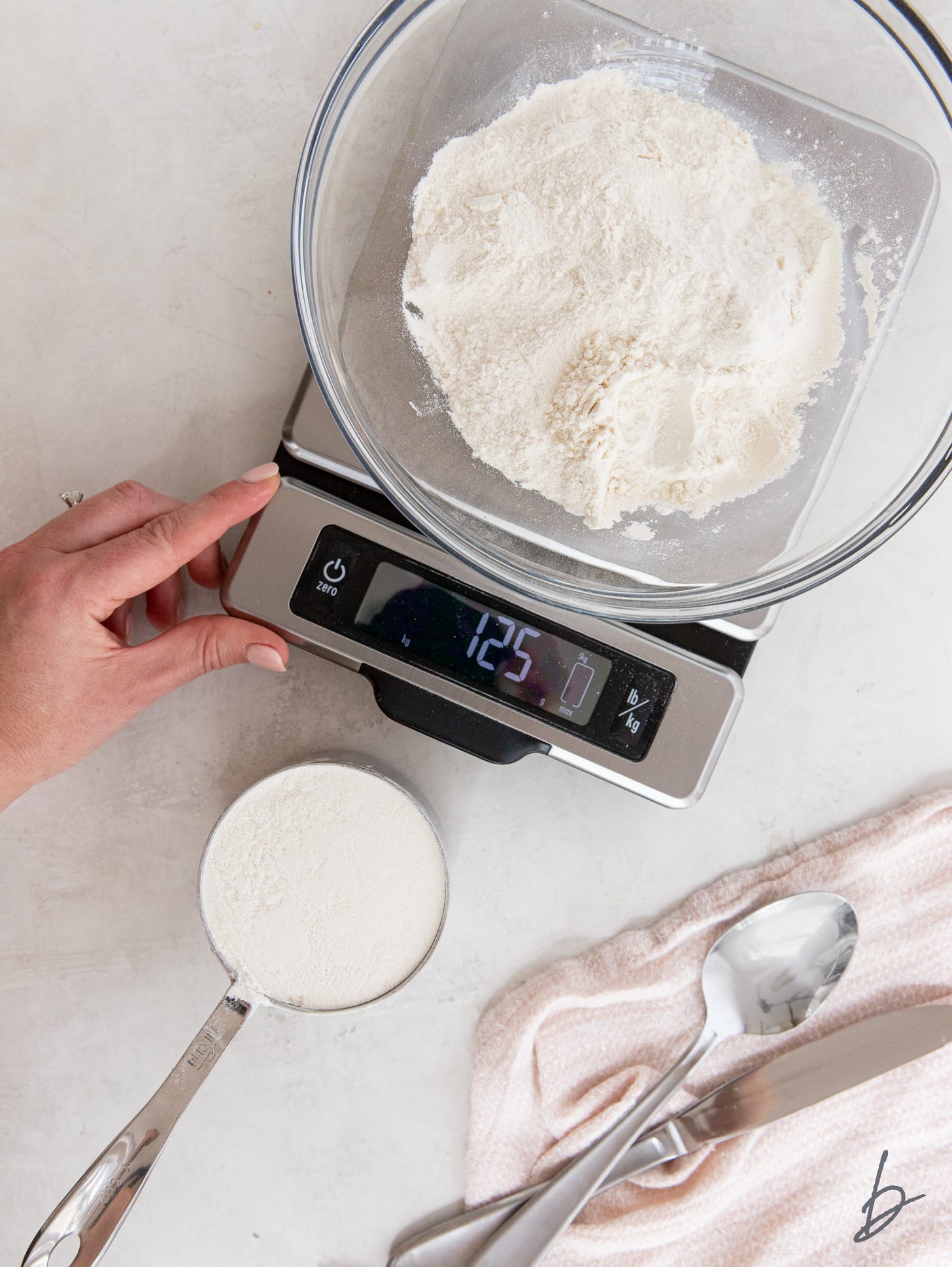
As part of my Better Your Baking series, I’m honing in on how to measure flour. Yes, measuring all your ingredients is recommended, but flour tends to be the base for most baking recipes. It also happens to be the ingredient that is most frequently mis-measured! I’ll share two methods: weighing with a kitchen scale and the “spoon and level” method without a kitchen scale.
Why Proper Measurements Are Important
The ratio of ingredients can make or break a recipe, especially when it comes to baking. The method in which we measure flour can drastically change. As a result, the results can lead to a dry and crumbly cookie, cracked cakes or a tough bread dough.
By putting your measuring cup directly into a bag a flour and scooping it up, the flour can weigh as much as 6 ounces or 170 g. That’s more than 1/3 cup extra flour in a recipe!
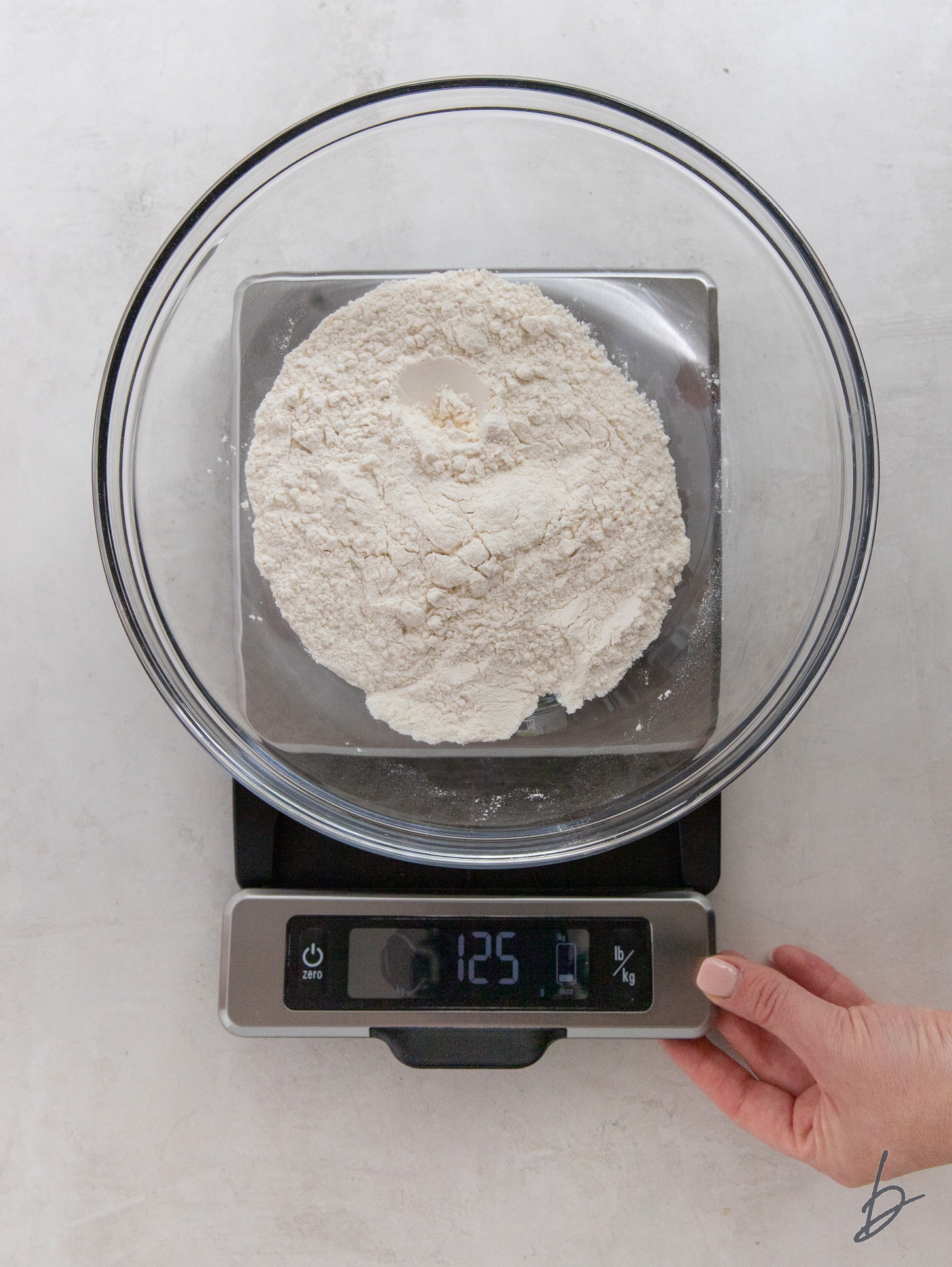
How Much Does a Cup of Flour Weigh?
One cup of all-purpose flour weighs 4 1/2 ounces or 125 grams. This is determined by properly measuring the flour, testing with popular flour brands and various measuring cups. I typically use King Arthur Flour Unbleached All Purpose Flour and All-Clad measuring cups. Here’s a quick reference chart:
- 1 cup all purpose flour = 125 g (4.5 oz)
- 1 cup bread flour = 125 g (4.5 oz)
- 1 cup cake flour = 113 g (4 oz)
- 1 cup whole wheat flour = 113 g (4 oz)
- For gluten-free and nut flours, check packaging for proper measurements.
Weight vs. Volume
Weight determines the heaviness of an object or ingredient. This is the most accurate method of measuring ingredients because it is consistent. Grams, ounces and pounds are measurements of weight.
Volume is the measure of how much space a piece of matter (in this case flour) takes up. Volume can vary depending on the size of a measuring cup, how firmly packed the flour is and whether you spoon the flour into the cup or scoop the cup into the bag.
How to Use a Kitchen Scale to Measure Flour
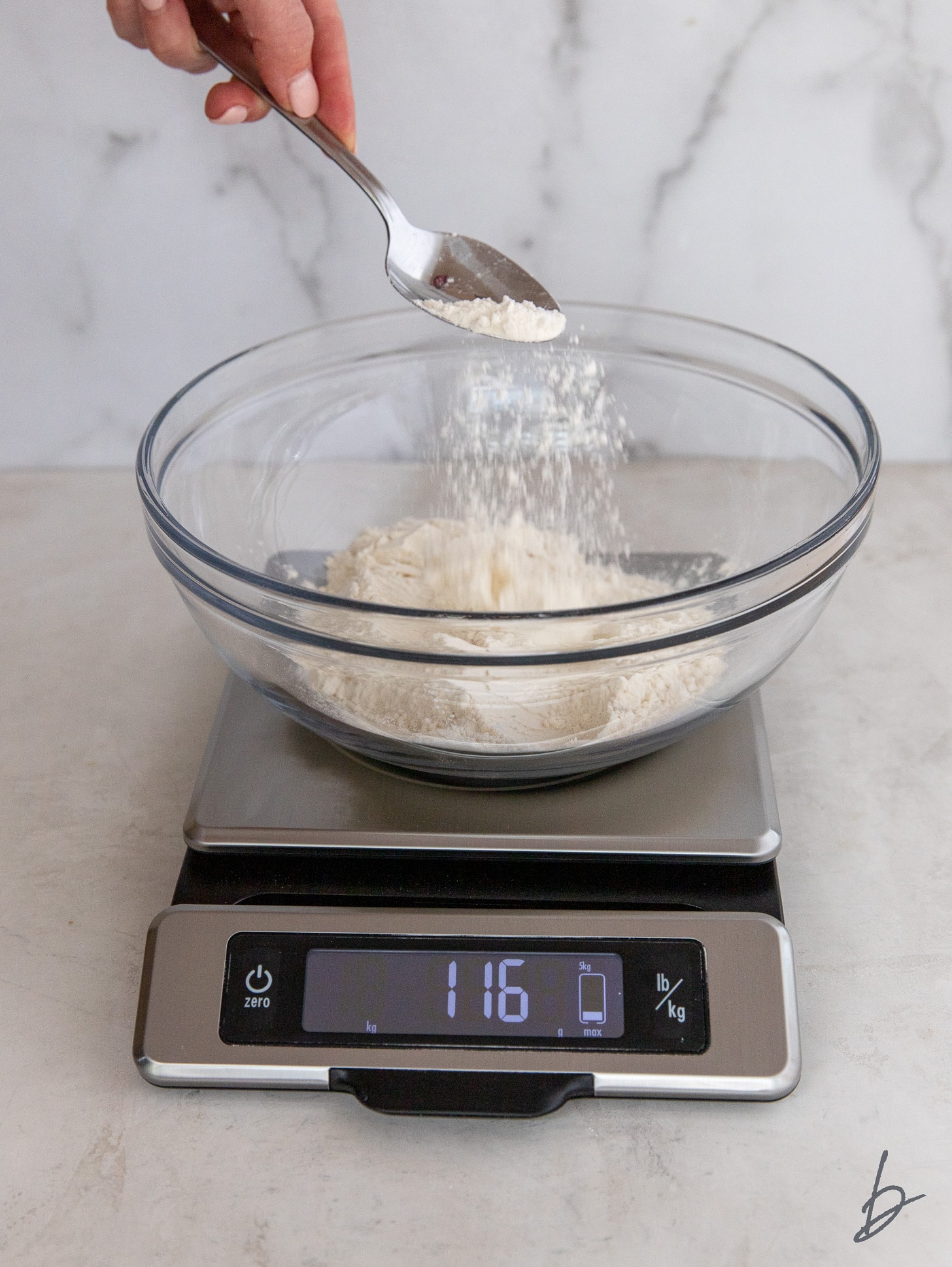
- Choose a good-quality kitchen scale and place it on a flat surface.
- Place your empty mixing bowl or ingredient bowl on the scale.
- Zero, or tare, the scale by turning it off and on. Be sure the scale reads zero (you don’t want to include the weight of the bowl in the measurement).
- Choose the desired measurement, in this case grams.
- Spoon the flour into the bowl until desired weight is reached (1 cup is 125 g).
How to Measure Flour without a Kitchen Scale
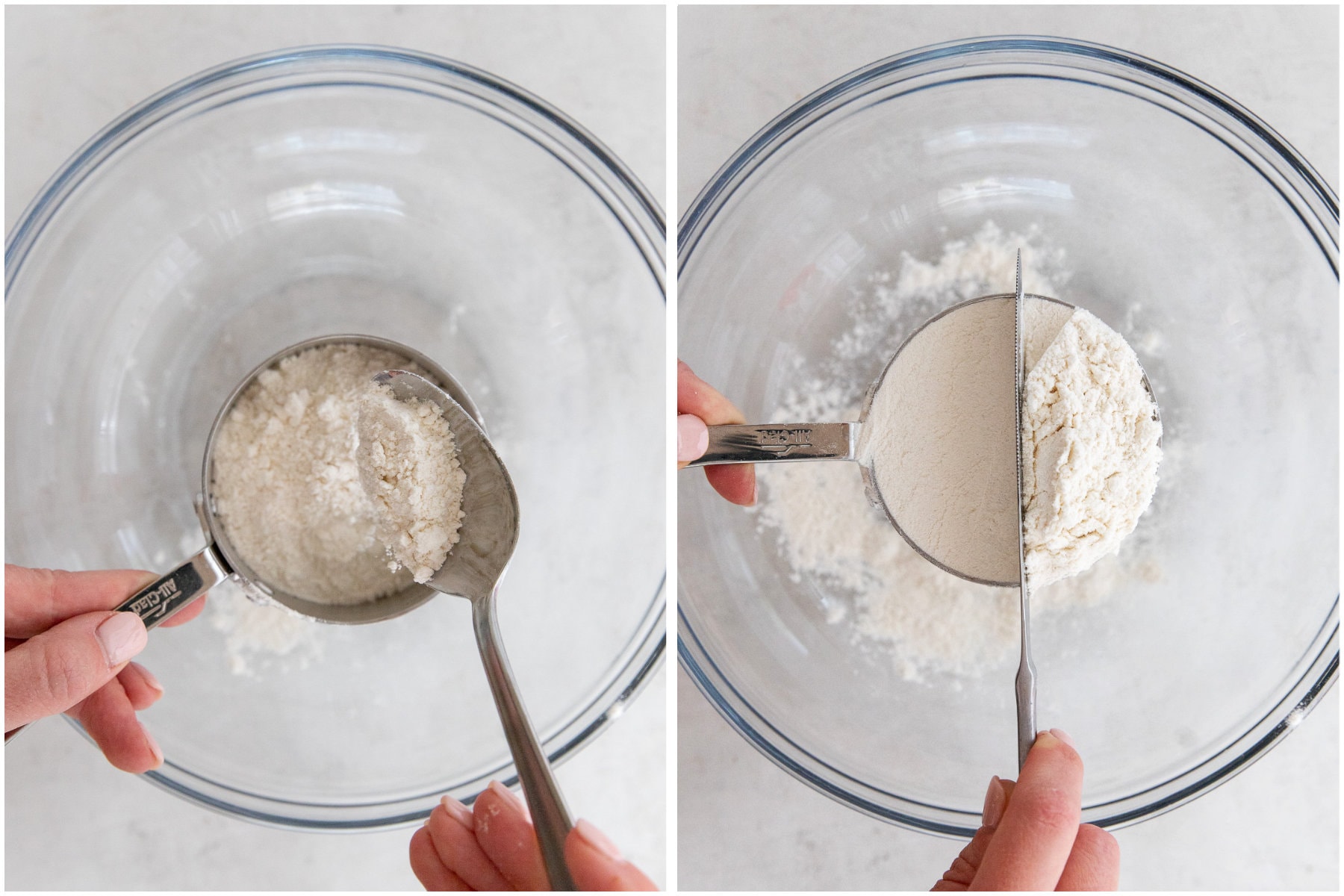
- Fluff up the flour with a fork or spoon.
- Use a spoon to sprinkle the flour into your measuring cup (do not pack it down) until it is completely full with a slight mound.
- Use a knife and scrape it across the top of the cup to level off the flour.
Expert Tips
DO use a good quality scale. I prefer one that has a pull out reader. That way, if I’m using a larger mixing bowl, I can still see the reading. I also like either glass or stainless steel for easy cleaning!
DO NOT put your measuring cup directly into the container or bag of flour and scoop it up. This will result in packed flour!
DO fluff up your flour before measuring. I find this helpful regardless of whether you’re using a scale. It helps aerate the flour to make soft and tender baked goods.
DO NOT pack down the flour into the cup or tap the measuring cup to make it settle. You want loose, airy flour in the cup before you level it with a knife.
Frequently Asked Questions
It depends on how your recipe it written. If it calls for “1 cup sifted flour,” then you sift before measuring. If it reads “1 cup flour, sifted,” then sift the flour after measuring.
If you don’t have a kitchen scale, use dry measuring cups for dry ingredients and a liquid measuring cup for your wet ingredients. I own all-clad measuring cups (they have lasted decades for my mom).
No. Whole wheat flour, cake flour, almond flour among most others weigh less than all purpose flour. I often refer to this ingredient weight chart for accurate measurements.
Bleached flour has a softer, finer texture while unbleached flour is slightly denser and tougher. The process of bleaching alters the proteins in flour and, thus, affects the gluten bonds that are formed when baking.
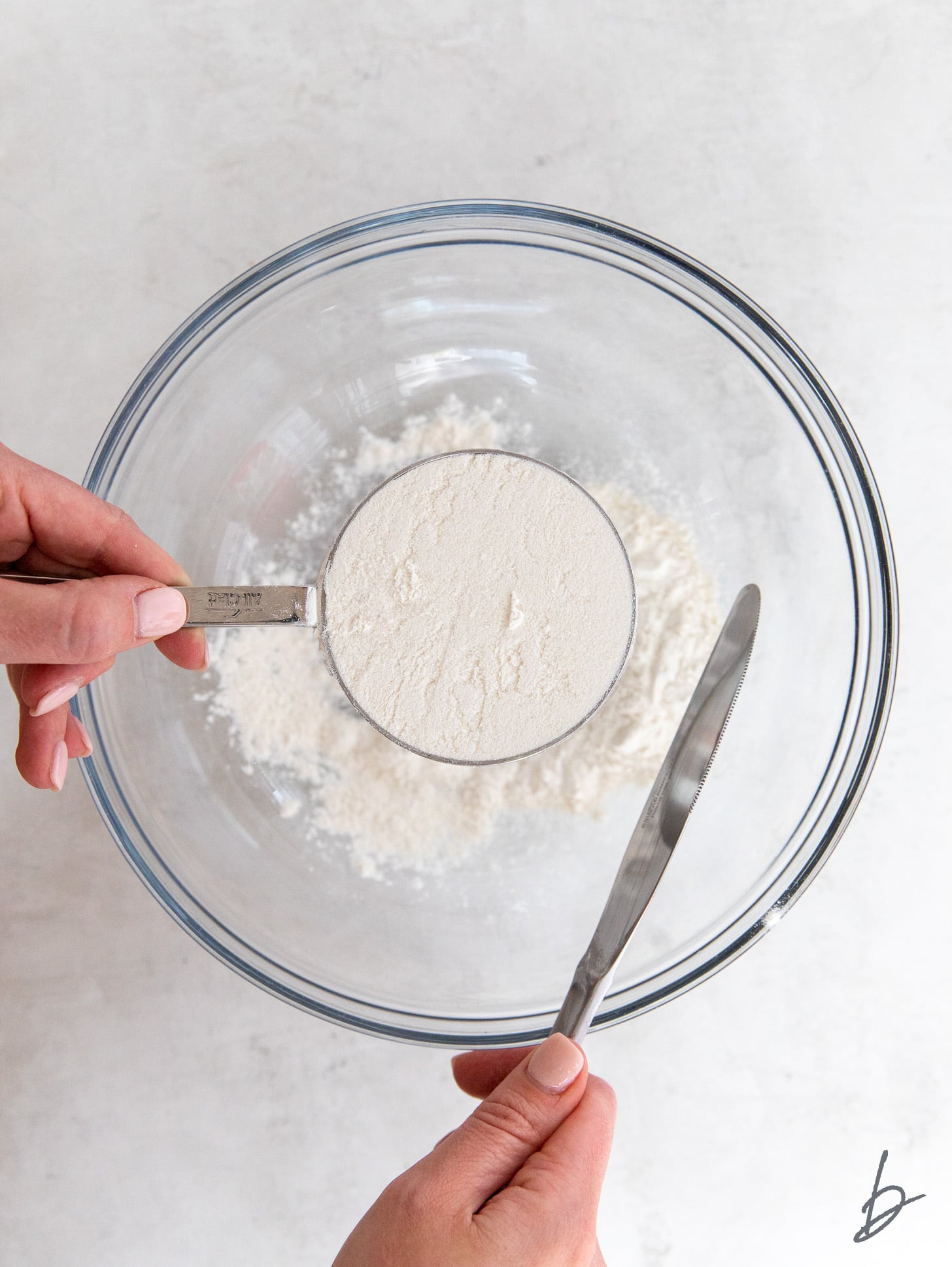
Related Recipes
Continue learning and improving your baking skills with these guides!
Did you love this recipe? Please leave a 5-star 🌟🌟🌟🌟🌟 rating in the recipe card below and if you REALLY loved it, consider leaving a comment further down the page.
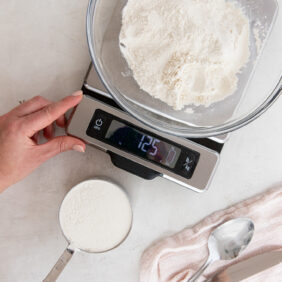
Get the Recipe: How to Measure Flour Correctly
Ingredients
- 1 cup (125 g) all purpose flour
Instructions
Kitchen Scale Method
- Make sure your kitchen scale is on a flat surface. Place your mixing bowl or ingredient bowl on the scale.
- Zero, or tare, the scale by turning it off and on again. Make sure the scale reads zero (you don't want to weigh your bowl!)
- Select grams as your unit. Spoon the flour into the bowl. Continue adding flour until desired weight is reached.
Spoon & Level Method
- Fluff up the flour with a fork or spoon. This will aerate the flour.
- Sprinkle the flour into the measuring cup until completely full and there is a slightly mound in the center. Do not pack it down.
- Use a knife to level the flour (scrape the excess off the top).

